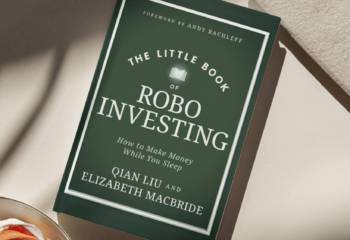If you’ve been reading the news, you’ve likely seen a bunch of recent headlines about inflation. It’s true that inflation has risen over the last few months and hit its highest level in more than a decade in May. But if you’re making changes to your long-term investment plan to protect yourself against short-term inflation concerns, you should probably think twice. As a general rule of thumb, you shouldn’t make changes to your long-term investing strategy based on the day’s headlines.
Here we’ll break down exactly what you need to know about inflation, as well as the right and wrong ways to protect yourself from its effects.
The basics of inflation
Inflation, by definition, is an increase in the prices of goods and services. It’s typically measured using what’s known as the Consumer Price Index, which, as the name suggests, tracks the prices of various things a consumer might purchase. Inflation can make anything more expensive, from your weekly groceries to a haircut. Unfortunately, wages usually don’t go up in perfect tandem with inflation. This means that over time, your paycheck will buy you less and less. For this reason, inflation can also be understood as the loss of buying power.
That said, inflation isn’t necessarily a bad thing. It fluctuates over time, but many experts say inflation of around 2% per year is a sign of a healthy economy. Accordingly, the Federal Reserve targets an average inflation rate of 2% over the long run. Inflation has been below that target for much of the recent past, and the Fed has said it will let inflation rise to over 2% in the short term to even things out. This means we should all mentally prepare to deal with slightly higher inflation for a while.
The right way to protect yourself against inflation
No one wants to lose buying power, and there’s one important step you can take to protect yourself against this: avoid holding too much cash. To be clear, it makes sense to keep some cash around for your emergency fund or other short-term purchases you’ll need to make within three to five years. But beyond that, holding onto cash can be a costly mistake.
When you keep your money in cash instead of investing it, it can lose value because of inflation. Over the last decade, the APY on high-yield savings accounts has seldom kept up with the rate of inflation. That means if you kept all of your money in a high-yield savings account (or worse, a regular savings account that paid even less interest) then your money would buy you less and less over time. The solution? Investing.
Investing is a great way to help your savings keep up with inflation. It involves taking some market risk, but the longer your investing time horizon, the less likely you are to lose money. As our Chief Investment Officer Burt Malkiel wrote last fall, portfolios that contain large amounts of equities (as Wealthfront’s recommended portfolios do) have historically performed well during periods of inflation. You should know that equities can also make your portfolio more volatile, which means you need to be able to stomach some inevitable ups and downs in your portfolio’s value over the short term. In the long run, however, you should be protected from inflation.
The wrong way to protect yourself from inflation
When inflation is in the news and people get nervous, investing advice abounds. Maybe you’ve seen articles urging you to start investing in real assets (such as real estate or natural resources) or specific sectors to protect your portfolio’s value. Maybe you’re feeling tempted to rethink your entire investment strategy. This is an understandable impulse. But unfortunately, when it comes to investing, what feels right is often wrong.
Before you start loading up on industrial metals, it’s important to remember that buying and selling specific investments as a hedge against inflation is a form of market timing. And while market timing can certainly feel like the right thing, research (including DALBAR’s annual report which quantifies the impact of investors’ behavior) consistently shows that people get it wrong. If you start buying and selling investments to try to get ahead of inflation, you’re likely to do more harm than good.
Focus on what you can control
If you’re concerned about inflation and what the future holds for your finances, we encourage you to get back to the basics. Consider investing to build long-term wealth, and focus on what you can control: lowering your taxes, lowering your fees, and managing your risk by diversifying and periodically rebalancing your investments. As long as your investment portfolio is designed to weather long-term market conditions (as Wealthfront’s recommended portfolios are) and you’re not sitting on a bunch of extra cash, you don’t have to worry about inflation.
Disclosure
The information contained in this communication is provided for general informational purposes only, and should not be construed as investment or tax advice. Nothing in this communication should be construed as a solicitation, offer, or recommendation, to buy or sell any security. Any links provided to other server sites are offered as a matter of convenience and are not intended to imply that Wealthfront Advisers or its affiliates endorses, sponsors, promotes and/or is affiliated with the owners of or participants in those sites, or endorses any information contained on those sites, unless expressly stated otherwise.
Wealthfront Advisers and its affiliates do not provide legal or tax advice and do not assume any liability for the tax consequences of any client transaction. Clients should consult with their personal tax advisors regarding the tax consequences of investing with Wealthfront Advisers and engaging in these tax strategies, based on their particular circumstances. Clients and their personal tax advisors are responsible for how the transactions conducted in an account are reported to the IRS or any other taxing authority on the investor’s personal tax returns. Wealthfront Advisers assumes no responsibility for the tax consequences to any investor of any transaction.
Investment management and advisory services–which are not FDIC insured–are provided by Wealthfront Advisers LLC (“Wealthfront Advisers”), an SEC-registered investment adviser, and financial planning tools are provided by Wealthfront Software LLC (“Wealthfront”). Brokerage products and services are offered by Wealthfront Brokerage LLC (formerly known as Wealthfront Brokerage Corporation), member FINRA / SIPC. All investing involves risk, including the possible loss of money you invest, and past performance does not guarantee future performance. Please see our Full Disclosure for important details.
Wealthfront Advisers, Wealthfront Brokerage and Wealthfront are wholly owned subsidiaries of Wealthfront Corporation.
© 2021 Wealthfront Corporation. All rights reserved.
About the author(s)
Tony Molina is a Product Evangelist at Wealthfront. He is a Certified Public Accountant (CPA) and holds Series 66 and Series 7 licenses from FINRA. View all posts by Tony Molina, CPA



